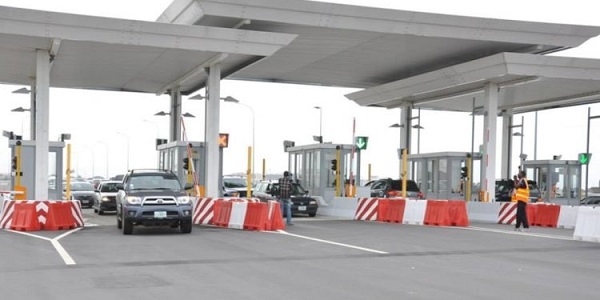Computex 2025 wraps up with bold AI innovations from tech giants
Computex 2025 concluded after four days of groundbreaking product unveilings and strategic announcements highlighting the global tech industry's accelerated shift toward artificial intelligence. With over 1,400 exhibitors from 34 countries, this year's edition, themed "AI Next," transformed Taipei into the world's epicenter of next-generation computing, from consumer tech to enterprise-grade AI infrastructure.
Nvidia: building Taiwan's AI future

Nvidia CEO Jensen Huang delivered a headline keynote, setting the show's tone. He introduced DGX Spark, a compact yet powerful AI supercomputer intended for research labs and businesses needing dense computing power. Huang also revealed NVLink Fusion, a modular AI architecture that allows tight integration of CPUs and GPUs from different vendors—a move set to reshape custom AI deployments.
In a major boost for Taiwan, Huang announced the construction of the country's first AI supercomputer in collaboration with TSMC, Foxconn, and the Taiwanese government. Additionally, Nvidia is establishing the Nvidia Constellation AI hub in Taipei's Beitou Shilin Science Park to foster local AI development and talent.
AMD: doubling down on AI and workstation performance
AMD showcased its latest silicon tailored for AI workloads and demanding applications. The new Ryzen AI Pro 300 Series processors bring enhanced NPU (neural processing unit) capabilities to business laptops, promising better on-device AI performance and battery efficiency. The Radeon RX 9060 XT GPU was unveiled for high-end gamers, featuring RDNA 4 architecture and AI-enhanced upscaling.

Professionals in content creation and engineering were introduced to the Ryzen Threadripper 9000 Series, featuring up to 96 cores. These processors are designed for content creators, engineers, and workstation users, reinforcing AMD's push into the professional computing segment.
Intel: celebrating 40 years in Taiwan with AI-centric tools

Intel marked its 40th anniversary in Taiwan with multiple product announcements. The Arc Pro B-Series GPUs, built on the Xe2 architecture, target AI inference, and media creation, while the upcoming Panther Lake chips promise power efficiency and next-gen performance built on Intel 18A process nodes.
A major highlight was the debut of AI Assistant Builder, a consumer-facing tool allowing users to build personalized, local AI assistants powered by Intel Core Ultra processors. This aligns with Intel's strategy to decentralize AI computing and reduce cloud dependency.
Acer: expanding AI to everyday devices

Acer revealed a strong lineup of AI-enhanced products designed to make advanced computing accessible. The Aspire 14 and 16 Copilot+ PCs are equipped with the latest Intel Core Ultra Series 2, AMD Ryzen AI 300 Series, and Snapdragon X processors, offering seamless AI performance for mainstream users.
The Swift Edge 14 AI, a slim ultrabook with a matte OLED display and a 21-hour battery life, targets mobile professionals who need performance and portability. Acer also introduced the PD243Y E Dual-Panel Portable Monitor, a foldable, double-screen 1080p display setup ideal for multitaskers and remote workers.
Gamers were treated to the Predator X27U F5, a cutting-edge OLED monitor boasting a 500Hz refresh rate and 1440p resolution, bringing esports-ready visuals to the mainstream.
ASUS: A Complete AI Ecosystem

ASUS took a holistic approach, unveiling an entire ecosystem under the theme "Ubiquitous AI. Incredible Possibilities." At its center is the ASUS AI POD, a massive server rack solution based on Nvidia GB300 NVL72 architecture tailored for enterprise AI workloads. Alongside it, the Ascent GX10, a compact AI supercomputer, brings powerful computing to startups and edge deployments.
For creators, ASUS showcased the ProArt P16, an AI-enhanced laptop with Studio drivers and color-accurate OLED screens. The ProArt X870E-CREATOR WIFI motherboard was also launched to complete its creative workstation lineup.
In the consumer space, ASUS introduced Zenbook, Vivobook Copilot+ PCs, and the Zenfone 12 Ultra, a flagship smartphone with advanced on-device AI for photography and personalization. ASUS also broke into digital health with VivoWatch powered by HealthAI Genie and EndoAim, an AI-powered endoscopic imaging system for hospitals.
Lenovo: Merging AI with Portability

Lenovo launched AI-ready devices across multiple categories. The ThinkStation PGX, a compact workstation with NVIDIA GB10 GPUs and 128GB RAM, was engineered for developers and AI researchers needing power on a desk footprint under 5 liters.
Its dual-screen Yoga Book 9i (2025) wowed attendees with its flexible OLED displays and Core Ultra 7 chip, designed for multitasking with AI-enhanced input. For gaming enthusiasts, the Legion Go 2 handheld, running on AMD Ryzen Z2 Extreme, offers PC-quality gaming in a portable form.
KLEVV: Next-Gen Memory for AI Demands

KLEVV, known for its high-performance DRAM, revealed new DDR5 memory modules boasting speeds over 10,000 MT/s. These modules are engineered for AI training and high-end gaming, with improved thermal design and power efficiency. The company also hinted at upcoming CAMM2 support, aligning with future laptop and workstation standards.
Computex 2025 cemented its role as the launchpad for the AI-powered era of computing. From AI laptops and edge devices to enterprise-grade infrastructure, every major tech brand showcased how artificial intelligence is reshaping products and experiences. Taiwan's tech ecosystem stood front and center, ready not just to supply components but to lead global innovation.
The next Computex is set for June 2–5, 2026, with expectations already building for what AI can bring next.












